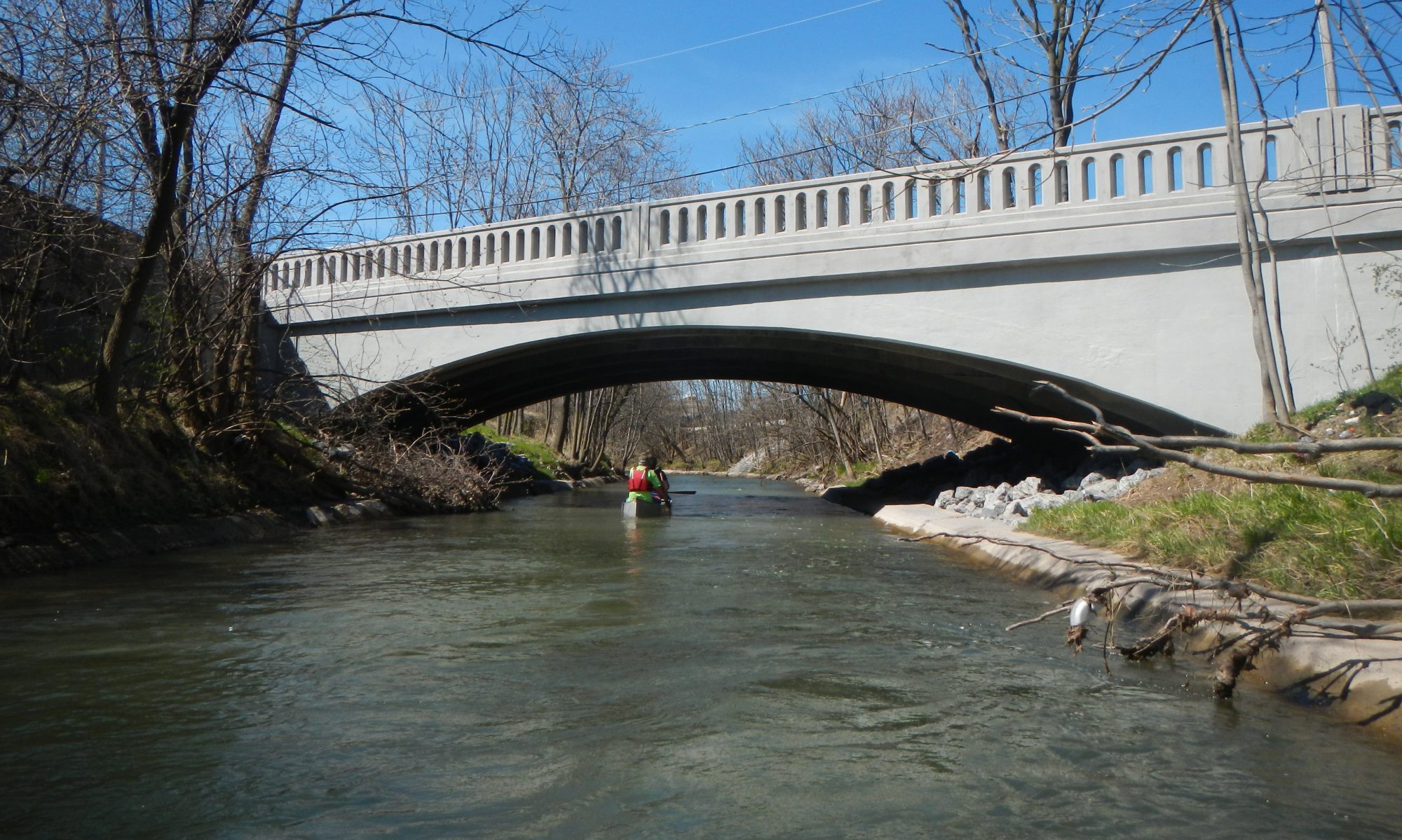
Successful revitalization of Onondaga Creek for recreational use is dependent not only on improving visible attributes — such as reducing trash buildup with our annual in-creek cleanups — but on understanding and monitoring the measurable quality of the creek water. The CNY chapter of the Izaak Walton League of America (IWLA) volunteer organization, in partnership with several area high-school science teachers, SUNY-ESF, Syracuse University, and the Onondaga County Soil & Water Conservation District, has been developing “Project Watershed CNY” since the chapter’s inception in 1989, and using this regional program to monitor Onondaga Creek.
To learn more about a recent ESF water quality study focusing on water inputs to Onondaga Lake, skip ahead to the October 2022 Water Quality Snapshot.
Method for Assessing Water Quality
CNY IWLA’s “Project Watershed CNY” follows the “Save Our Streams” methods for assessing water quality based on the identification of stream insects and macroinvertebrates, and additionally adds a chemical monitoring component based on the Field Manual for Water Quality Monitoring: An Environmental Education Program for Schools by Mark Mitchell and William Stapp at the University of Michigan.
Spanning more than two decades, volunteers have sampled points along Onondaga Creek from the headwaters near Route 80 and Tully Farms Road all the way to Dickerson Street near downtown Syracuse, recording and archiving their biological and chemical sample results in CNY IWLA’s database.
Biological Water Quality
Simply speaking, we know organisms who make the creek-water their homes — mainly insects and macroinvertebrates (crustaceans) — range from being very tolerant of poor water quality to being very sensitive to water pollution (and particularly decreased levels of dissolved oxygen). CNY IWLA volunteers examine sample water from various points along the creek to record how many organisms they can see — paying extra attention to how many very sensitive organisms they observe — to then infer excellent, good, fair, or poor water quality using the “Save Our Streams” standardized biological monitoring rubric.
- The SENSITIVE category includes insects like mayflies, stoneflies and caddisflies.
- The LESS SENSITIVE category includes crayfish, scuds, dragonflies and damselflies.
- The TOLERANT category includes midge flies, black flies and leeches.
The more organisms the volunteers record in their sample the better, and the more sensitive organisms the even better!
Chemical Water Quality
Chemical tests assess what’s harder for CNY IWLA volunteers to observe directly in their water samples and record nine distinct measurements:
- Dissolved Oxygen
- Fecal Coliforms
- pH
- Biochemical Oxygen Demand (BOD)
- Reactive Phosphate
- Nitrate Nitrogen
- Chlorides
- Turbidity
- Total Dissolved Solids (TDS)
Similar to the biological water quality assessment, the nine chemical measurements are then weighted using the “Save Our Streams” standardized chemical monitoring rubric to produce an overall chemical water quality rating of excellent, good, fair, or poor.
October 2022 Water Quality Snapshot
In October of 2022, three SUNY ESF students — Garrit Coddington, Conner Grant, and Michael Umstead — completed a project to better understand the water quality of the three primary tributaries into Onondaga Lake: Onondaga Creek, Nine Mile Creek, and the Syracuse Metropolitan Wastewater Treatment Plant, or “Metro.” They took samples at the mouth of each tributary and recorded the levels of total and dissolved Nitrogen and Phosphorus, measured Chlorophyll-a concentrations, and calculated the Biological Oxygen Demand of each sample.
- High Nitrogen (N) and Phosphorus (P) levels indicate poor water quality and often point to agricultural runoff, lawn fertilizers, or sewage making its way into the water source. Excessive Nitrogen and Phosphorus have historically given Onondaga Lake its greenish color and contribute to algae blooms. Onondaga Creek was found to have low Nitrogen and Phosphorus amounts.
- Chlorophyll-a (Chl-a) gives the phytoplankton present in the water their green color and facilitates their transformation of sunlight plus oxygen into energy. High concentrations of Chlorophyll-a indicate large populations of phytoplankton which generally indicates the water source sustains high levels of Nitrogen and Phosphorus. Onondaga Creek was found to have low Chlorophyll-a concentrations, likely due to the combination of low Nitrogen and Phosphorus plus sediment from the Tully mud boils making it hard for phytoplankton to get the sunlight they need.
- Biological Oxygen Demand (BOD) tells us about the amount of organic material present in a water source by measuring the change in dissolved oxygen in a water sample over time. A large Biological Oxygen Demand indicates there’s a large population of the microorganisms that break down organic material in the water (and a lot of organic material present to support them!). Onondaga Creek was found to have high Biological Oxygen Demand, indicating there’s significant organic material being broken down by the creek’s microorganisms.
For more information on the project methods and results, see the attached, A Comparative Analysis of Nutrient Contributions from 3 Major Inflows to a Restored Urban Lake [PDF, 858KB].
More Information and References
Izaak Walton League of America
Onondaga County Soil & Water Conservation District
We are grateful to Les Monotory, retired environmental planner with the Onondaga County Health Department and the County’s Environmental Management Council, for his commitment to CNY IWLA and partnership in publishing this content about water quality monitoring.

You must be logged in to post a comment.